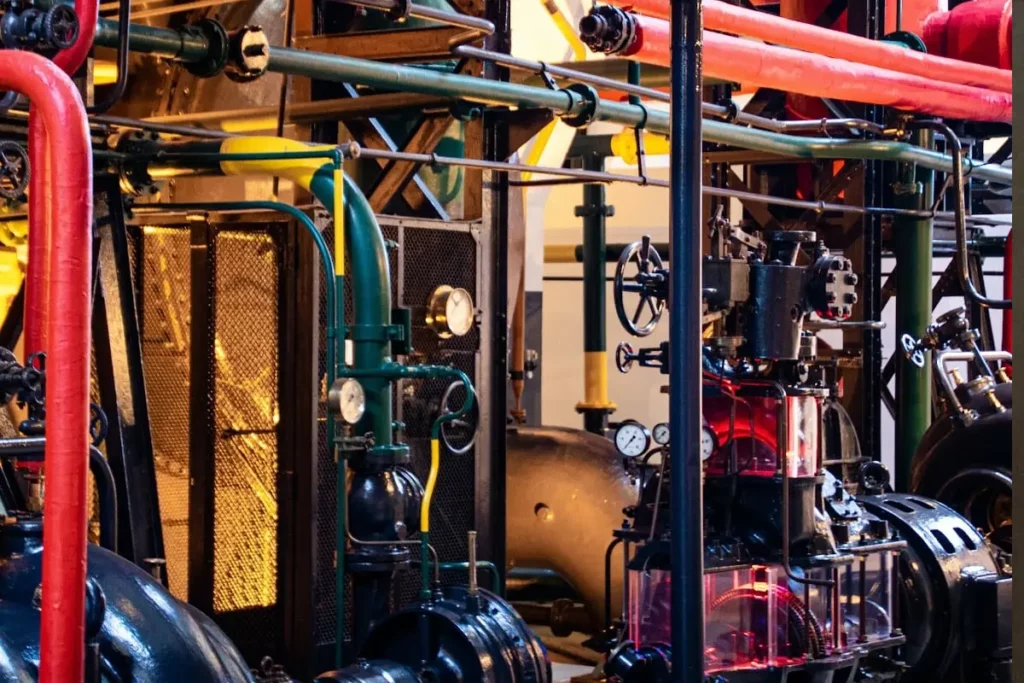An air valve is a critical component in liquid piping systems, designed to automatically release accumulated air and wastewater gases or admit air during the system’s filling, draining, or normal operation. These valves are fundamental in maintaining pipeline efficiency and safety, particularly in water distribution and wastewater treatment applications. By effectively managing air within a system, air valves help protect equipment, optimise flow conditions, and prevent costly damage.
There are several types of air valves available, each engineered to meet specific operating conditions and functional requirements. Choosing the right one ensures reliable performance and longevity of the system.
What Are Air Valves Used For?
When air accumulates in a liquid piping system, it can cause significant issues. Air pockets reduce the effective cross-sectional area of the pipe, hindering the flow of liquid and increasing system resistance. This often results in:
- Reduced flow efficiency
- Unstable system pressures
- Increased energy consumption from pumps
- Potential water hammer events
- Cavitation and corrosion of equipment
- Overall system failure in extreme cases
Water, under standard atmospheric conditions, typically contains around 2% dissolved air by volume, with even more at elevated pressures. As water flows through pipes, changes in pressure and temperature can cause this air to come out of solution, forming pockets. Additionally, air can enter through fittings, seals, poorly maintained equipment, or system leaks.
To mitigate these risks, air valves are strategically installed throughout the system—especially at high points, long horizontal runs, low-pressure zones, and system terminations—to allow trapped air to escape or be admitted as needed.
Things to Consider Before Purchasing an Air Valve
Types and Sizes of Air Valves
There are three main categories of air valves, each serving a distinct function:
- Air Release Valves:
Automatically discharge small quantities of air during system operation, ideal for high points in the system. - Air/Vacuum Valves (often called large orifice valves):
Designed to release large volumes of air during system draining or filling. - Combination Air Valves:
Combine the functions of air release and air/vacuum valves to offer comprehensive protection in a single unit. - Selecting the correct size is just as important as choosing the type. An undersized valve might not evacuate air effectively, while an oversized valve could lead to premature failure or erratic performance. Proper sizing depends on pipe diameter, flow rates, and system pressure.
- Functions of Air Valves
Understanding the role the valve needs to play is key. Is it primarily to release trapped air during system operation? Or to prevent vacuum conditions during draining? Perhaps both? Knowing your system’s requirements will guide you toward the correct configuration. - Performance Requirements
Every air valve must be evaluated against your system’s operating parameters, such as:
- Working pressure and pressure range
- Flow capacity and velocity
- Operating temperature
- Altitude and elevation profile of the pipeline
- Compatibility with the type of liquid being conveyed (e.g., potable water, sewage, industrial fluids)
- Failing to consider these can lead to inadequate performance or even valve failure.
- Materials of Construction
The material you choose must suit the environment and fluid properties. Common materials include:
- Brass: Good corrosion resistance, suitable for potable water and general use.
- Stainless Steel: High durability, excellent for corrosive or high-pressure applications.
- Ductile Iron: Strong and cost-effective, often used in municipal water systems.
- Plastic (PVC or Nylon): Lightweight and corrosion resistant, great for low-pressure or chemical applications.
Material selection should also account for temperature tolerance, chemical resistance, and mechanical stress.
- Maintenance Planning
To ensure long-term performance, regular inspection and maintenance are essential. Choose valves with removable covers or easy-access features that simplify cleaning and repairs. Maintenance-friendly design can save time and costs over the valve’s lifecycle.
You should also consider:
- Availability of spare parts
- Manufacturer support
- Ease of disassembly and reassembly
Why Air Valves Matter
Though often overlooked, air valves are vital to the safe and efficient operation of pressurised piping systems. Whether used in water supply networks, sewage treatment plants, or industrial processing systems, they protect infrastructure from air-related issues that could otherwise cause costly downtime and repairs.
By maintaining steady pressure and allowing air to move in and out of the system as needed, these valves ensure:
- Optimal pump performance
- Protection of mechanical components
- Minimized water hammer effects
- Extended system life
Choosing the Right Partner
At John Valves, we understand that selecting the correct air valve can be complex, especially when balancing technical requirements, environmental conditions, and budget constraints. Our experienced team can guide you through every step—from system analysis to final selection—ensuring you get a valve that fits your exact needs.
Whether you’re upgrading an existing system or designing a new one, we have the expertise and product range to support you.
Contact us today to learn more about the high-quality air valves we manufacture and supply.

